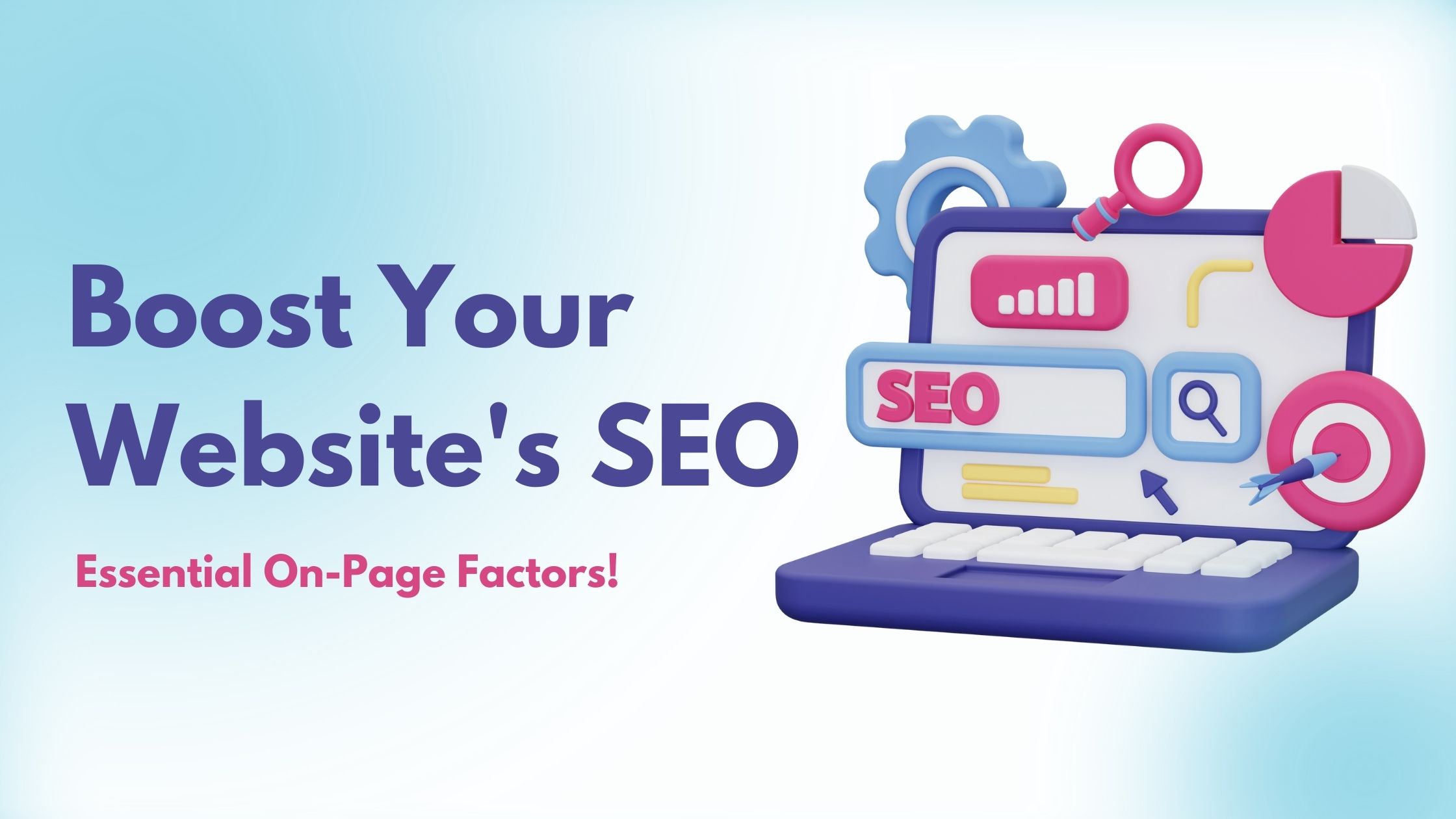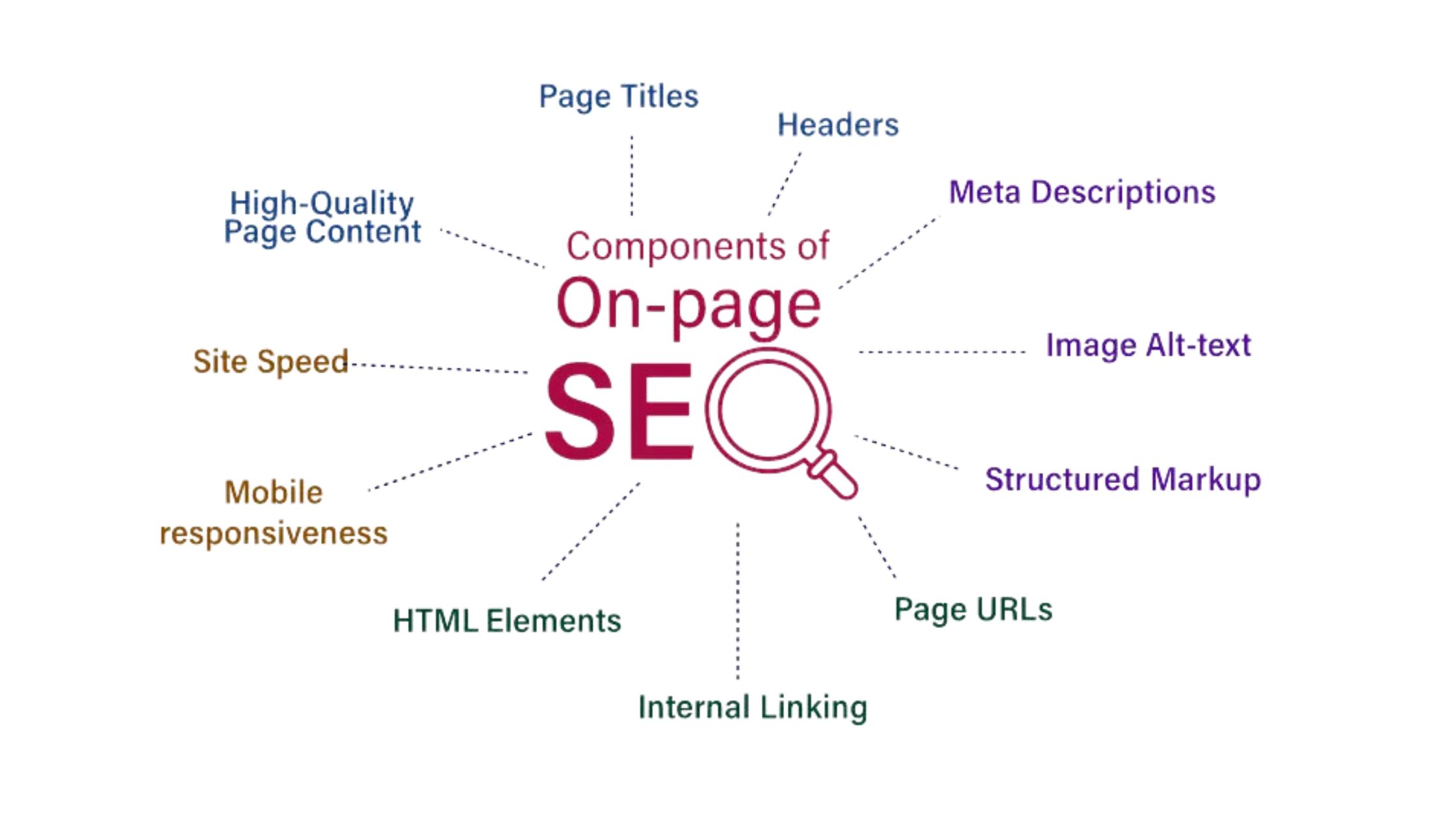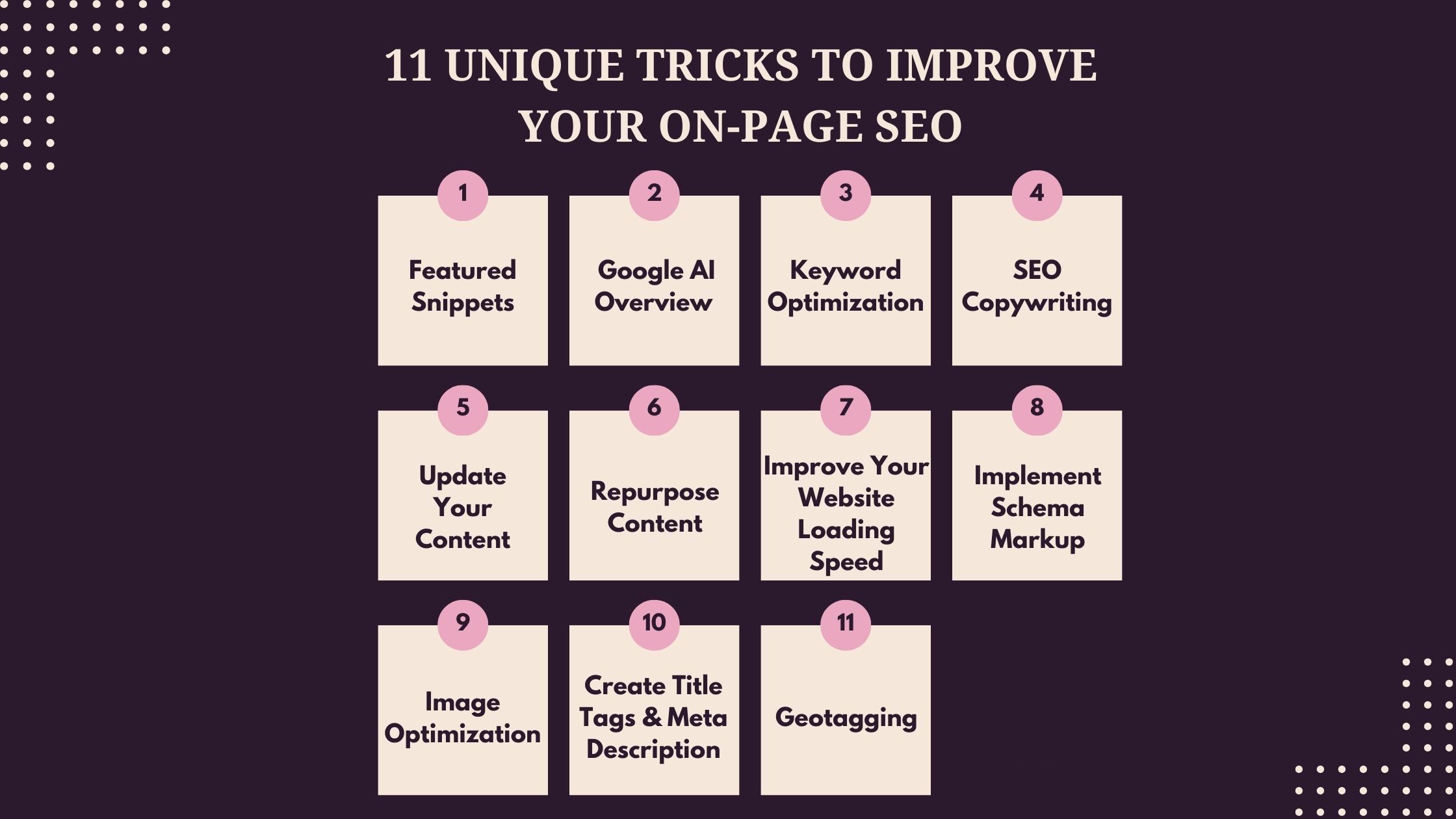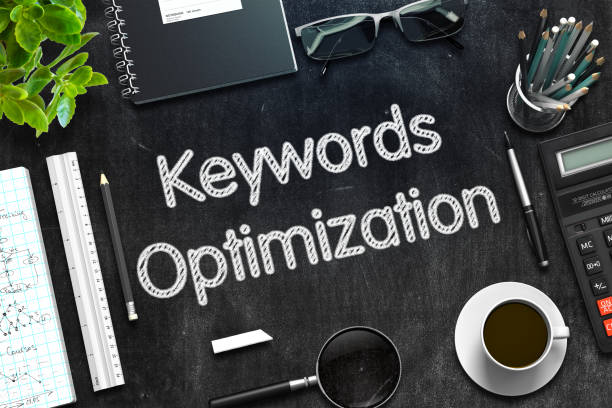Boost Your Website's SEO: Essential On-Page Factors
 Woosper
Woosper
Are you willing to advance your website’s functionality? The secret to getting more traffic and boosting search engine results is to become an expert in On-Page SEO. Let’s explore some unconventional methods that can help your website stand out from the crowd.
In this article, we’ll explore eleven strategies that go beyond the basics to help you optimize your site efficiently. From refining content to boosting user experience, these actionable tips will help you stand out in search results. Let’s get started and learn how to transform your on-page SEO strategy completely!
What is On-Page SEO?

On-page SEO is a type of search engine optimization that optimizes individual web pages to improve their search engine rankings. It involves implementing changes to several aspects of a website to make it more attractive to both search engines and viewers.
Additionally, the techniques are applied directly to your website’s content and structure to attract more organic traffic. On-page SEO tasks typically involve optimizing for search intent, title tags, internal links, and URLs.
Furthermore, mobile-friendliness and fast page speed are crucial for a better user experience, as search engines also prioritize these factors. Basically, it covers anything you can do on a webpage (or internally) to improve your rankings.
11 Unique Tricks to Improve Your On-Page SEO

While many SEO methods are well-known, these 11 unique tactics can provide a significant increase to your website’s search engine ranks. From optimizing content to enhancing user experience, these strategies will help you climb to the top of the SERPs and attract more organic traffic.
1. Get Your Site Inside of Featured Snippets
Featured snippets are informative boxes that offer a brief answer to the user’s question and are displayed at the top of Google search results. They’re designed to give users quick and easy information without the need to click on a link. Getting your site featured here can significantly boost visibility, traffic, and credibility.
• Use keyword research tools to find search queries.
• Aim for a clear and concise answer.
• Use bullet points, numbered lists, and tables in your content.
• Ensure your content is informative and directly answers the user’s query.
2. Optimize for Google AI Overview

Optimizing for Google AI Overview has significance for optimizing your on-page SEO as Google refines its AI-powered results for searches. Google’s AI algorithms now prioritize material that more closely matches user intent, resulting in more relevant and high-quality search results. To integrate your on-page SEO with Google AI:
• Focus on semantic search by using related keywords.
• Enhance user experience by improving site structure, navigation, and mobile friendliness.
• Create content that can be easily interpreted by AI-driven tools.
• Stay updated with AI trends.
3. Keyword Optimization

Keyword optimization involves carefully selecting and including specific keywords in your website’s content to help search engines understand the intent of your page.
• Use tools like Google Keyword Planner or SEMrush to identify relevant keywords with high search volume and low competition.
• Place your target keywords in the body text, headings (H1, H2, etc.), title tags, and meta descriptions.
• Use long-tail keywords.
• Use synonyms and related terms to avoid keyword stuffing.
4. SEO Copywriting
The process of creating content that is both optimized for search engines and appealing to readers is known as SEO copywriting. It’s an essential component of on-page SEO that can significantly boost the website’s visibility and engagement.
Here are a few tips for creating SEO-friendly content:
• Identify relevant keywords and utilize them naturally in your content.
• Create valuable and high-quality content by writing clearly and logically.
• Include persuasive and compelling call-to-action.
• Consider hiring the best content marketing services for expert guidance.
5. Regularly Update Your Content

Consistent content updating is an essential component of on-page SEO that can considerably boost your brand awareness.
Here’s how you can keep your content fresh:
• By continuously adding new information and refining existing articles.
• Publish new blog posts on a regular schedule.
• Keep updated on the latest market trends and include them in your content.
• Update outdated images or videos with fresh visuals.
6. Repurpose Content into Different Formats
The practice of repurposing content involves using already-existing content and transforming it into a different format. Increasing your on-page SEO with this strategy can help you draw in more visitors dramatically.
Let’s learn how to repurpose content:
• Repurpose infographics into blog posts, social media graphics, or presentations and vice versa.
• Create blog posts or articles based on your video content.
• Convert your content into social media posts, stories, or reels.
• Share your repurposed content on multiple platforms to reach a broader audience.
7. Improve Your Website Loading Speed

Website speed is crucial for both user experience and search engine optimization (SEO). Slow-loading websites can annoy visitors and negatively impact your search engine rankings.
Here’s how you can increase your website’s speed and enhance user experience:
• Reduce image and video file sizes without compromising quality.
• Eliminate unnecessary characters from HTML, CSS, and JavaScript files.
• Select a hosting provider with fast servers.
• Utilize a Content Delivery Network (CDN).
• Ensure that your website functions and looks well on all sorts of devices.
8. Implement Schema Markup
To provide search engines with more details about your material, you can add a code to your website called schema markup. Utilizing schema can help search engines understand the structure and content of your website.
How to implement schema markup:
• Select the appropriate schema type for your content.
• Use a schema generator or write the code manually.
• Place the code in the <head> section.
• Use Google’s structured Data Testing Tool.
9. Image Optimization
By optimizing your images, you can enhance your website’s loading speed, improve user experience, and enhance the overall on-page SEO performance.
Here are some essential image optimization techniques:
• Select the appropriate format (JPEG, PNG, or WebP).
• Reduce image file sizes using tools like TinyPNG or ImageOptim.
• Incorporate relevant keywords into alt text.
• Consider applying image sitemaps.
10. Create Compelling Title Tags and Meta Description
Title tags and meta descriptions are one of the crucial elements of on-page SEO. They provide search engines with a summary of the webpage’s content and can influence users to click on your website.
Here’s how to create convincing title tags and meta descriptions:
• Keep it concise (50–60 characters for title tags and 150–160 characters for meta descriptions).
• Write a compelling summary and include your target keyword in both.
• Use strong action verbs and avoid keyword stuffing.
• Write an intriguing call to action.
11. Geotagging
Targeting location-based queries using geotagging is a powerful approach to improving your on-page SEO. According to a Forbes Advisor report, four in five people use search engines for local queries.
By including geographic data — like coordinates or precise location details — into website’s text, photos, and meta tags, you can effectively target local searches. Additionally, for businesses offering digital branding solutions, geotagging helps attract targeted regional traffic and boosts visibility in local searches.
Here’s how you can implement geotagging:
• Take advantage of Google My Business.
• Add location-related schema markup to your website.
• Encourage user-generated content.
• Include your city, state, or country in your website’s title tags.
Why is On-Page SEO Important?

Due to its direct influence on search engines’ understanding and ranking of your website, on-page SEO is incredibly significant. It involves optimizing your website’s content and structure to make it more appealing to search engines.
By optimizing vital elements, you can:
• Improve search engine visibility.
• Enhance user experience.
• Target specific keywords effectively.
• Increase organic traffic.
• Boost site credibility.
Moreover, expert search engine optimization services ensure that elements are properly optimized, resulting in higher ranks and improved overall site performance. Ultimately, on-page SEO allows your website to compete more effectively in search results.
Conclusion
In a nutshell, mastering on-page SEO is essential for boosting your website’s visibility and driving organic traffic. From optimizing keywords and images to leveraging schema markup and geotagging, you can significantly enhance your website’s overall performance in SERPs.
Remember that on-page SEO is a continuous activity that needs regular monitoring and modifications. Staying up-to-date on the latest trends and best practices can help your website remain competitive in the constantly evolving digital world.
Ready to boost your SEO? Contact our experts today!
Subscribe to my newsletter
Read articles from Woosper directly inside your inbox. Subscribe to the newsletter, and don't miss out.
Written by

Woosper
Woosper
Woosper is a brand marketing firm specialising in the development and implementation of comprehensive marketing strategies for companies of all sizes. Our experienced marketing team collaborates closely with clients to determine their distinct brand identity and create targeted campaigns that drive engagement and lead generation.